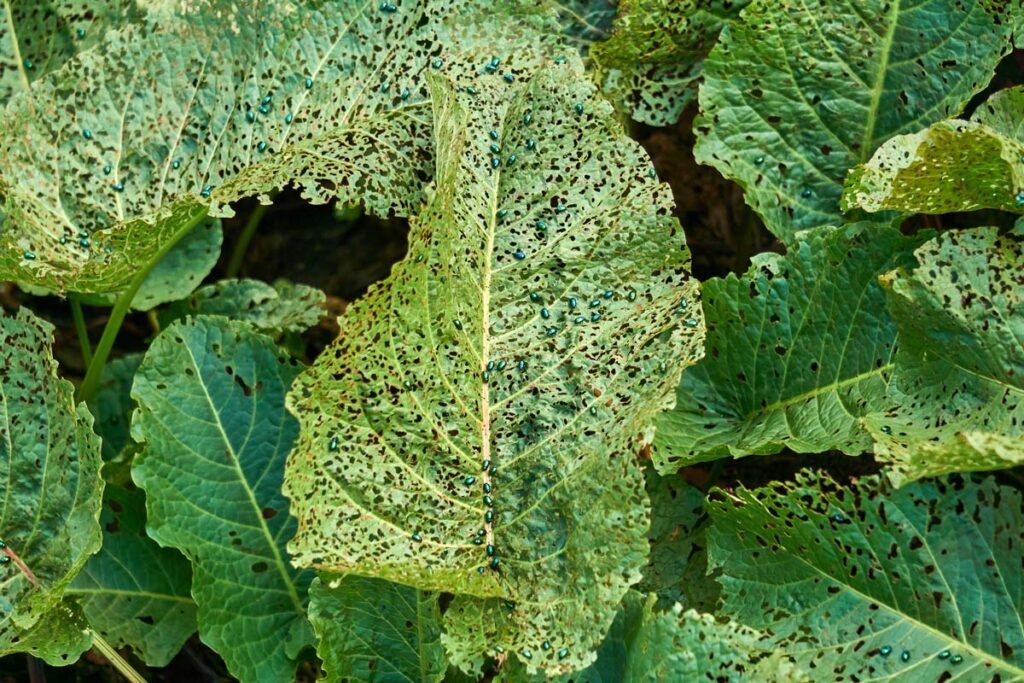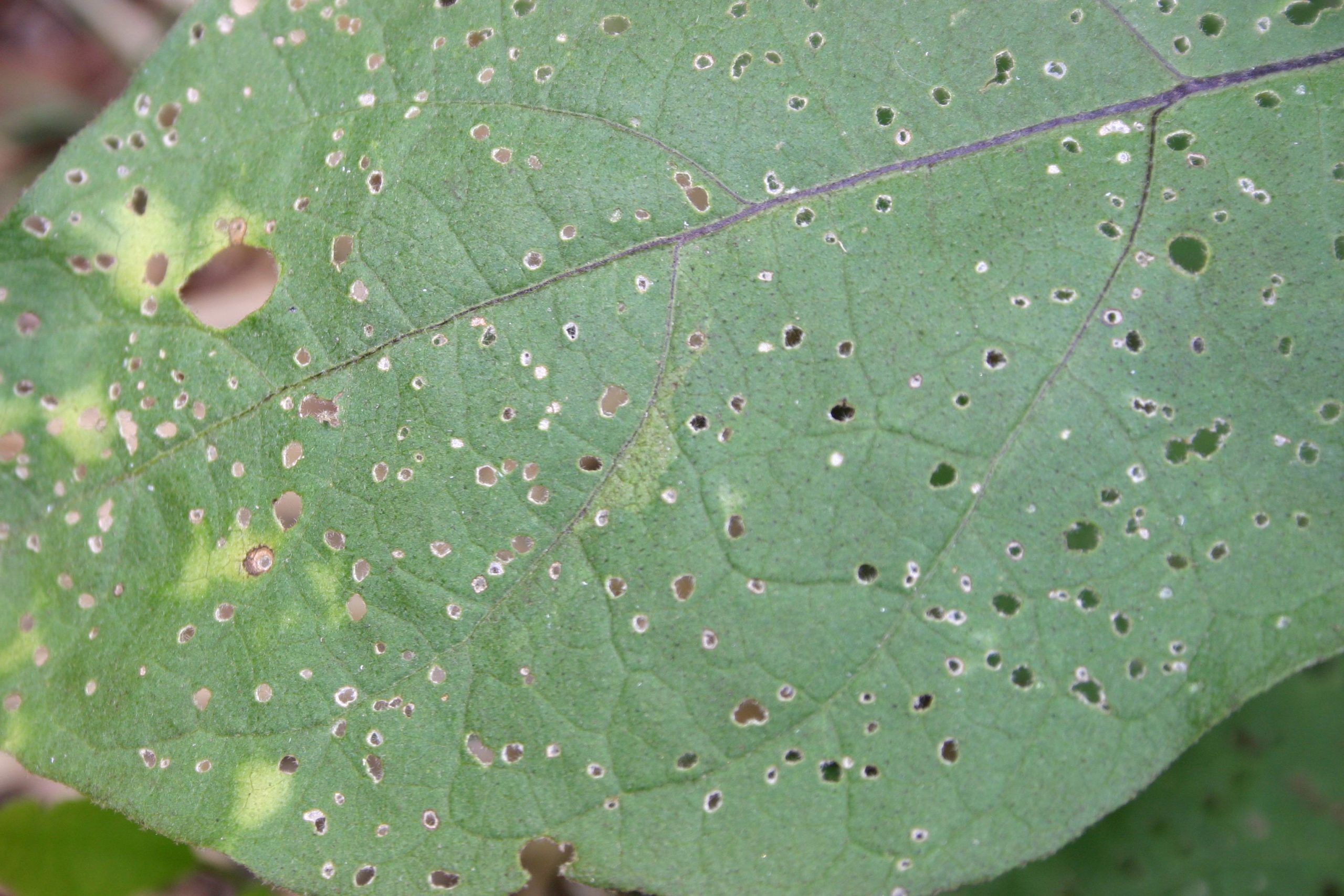Tomatoes are one of the most popular vegetables grown in home gardens However, they are susceptible to damage from a variety of insect pests, including flea beetles Flea beetles are small insects that chew holes in tomato leaves, stunting plant growth and reducing yield. If left uncontrolled, flea beetle damage can quickly destroy a tomato crop. This article will cover how to identify, prevent, and control flea beetle damage on tomato plants.
How to Identify Flea Beetle Damage on Tomatoes
Flea beetles are very small, about 1/16 to 1/8 inch long. They can be black, bronze, or metallic gray in color. Their name comes from their ability to jump like fleas when disturbed.
Adult flea beetles chew small, round holes in tomato leaves. The holes are about 1/8 inch in diameter or smaller. If flea beetle damage is severe, the leaves take on a lacey, sievelike appearance as more and more of the leaf surface is removed.
Seedling tomato plants are the most susceptible to flea beetle damage. Mature plants can typically tolerate some feeding. But early damage to young plants can stunt growth and reduce yields.
Monitor tomato transplants and seedlings carefully in spring. Check the underside of leaves for the presence of small, jumping beetles. Look for signs of flea beetle damage, including the characteristic small holes in leaves. Take action at the first sign of damage to prevent extensive feeding.
How to Prevent Flea Beetles on Tomatoes
Here are some tips to avoid flea beetle problems in the tomato patch:
-
Delay planting until after the initial spring flea beetle emergence. Plant as late as possible when warmer weather increases growth.
-
Control weeds, which provide an alternate food source for flea beetles.
-
Remove crop debris from the fall garden to eliminate flea beetle overwintering sites.
-
Use floating row covers over seedlings, sealing the edges to keep beetles out. Remove covers when plants start to flower.
-
Interplant with strong-smelling herbs like basil, catnip, or mint which may deter flea beetles.
-
Use nasturtiums or radishes as trap crops to lure flea beetles away from tomatoes.
-
Encourage natural predators like ladybugs that eat flea beetle larvae and eggs.
How to Control Flea Beetles on Tomato Plants
If preventive measures fail, insecticidal control may be necessary to save tomato plants from flea beetle attack. Here are some effective options:
-
Spray plants with neem oil, insecticidal soap, or a strong water spray to kill and knock off flea beetles. Reapply frequently.
-
Dust leaves lightly with talcum powder, which irritates flea beetles upon contact.
-
Apply commercial insecticides containing carbaryl, pyrethrin, or other plant-safe ingredients. Always follow label directions.
-
Trap flea beetles on yellow sticky cards placed near plants. The beetles are attracted to the color.
-
Pick off beetles by hand and drop them into soapy water to control light infestations. Check under leaves where they hide.
-
Use lightweight row covers over plants to form a physical barrier against flea beetles, sealing the edges. Remove covers when blossoms appear.
With prompt identification and treatment of flea beetle infestations, tomato plants can be protected from major damage. Combining cultural, mechanical, and organic controls offers the best defense against these tiny but destructive pests. The result will be healthy tomato plants and an abundant harvest.
Using Neem Oil to Get Rid of Flea Beetles
- Fill the sprayer with water to the one-gallon line.
- Add 1 ounce of Neem oil.
- Pump the handle up and down to build up pressure and prime the pump.
- Spray a lot of flea beetles all over your garden and on any plant that has flea beetle damage. You can also spray preventatively on susceptible plants.
Make sure to treat with Neem oil early in the morning or late in the evening. When it’s hot outside, you shouldn’t spray anything, like oil, because the sun could burn the plants.

What Are Flea Beetles
Flea beetles are about the same size as other leaf beetles, but their back legs are bigger, which lets them jump from plant to plant when they feel threatened. They can also walk normally and fly like other insects.
If you look at your garden plants and see bugs that jump like fleas, that’s a good sign that they have flea beetles.
Gardening Power to the People: Flea Beetles—When Tomatoes Go Bad
FAQ
How do you get rid of flea beetles on tomatoes?
What is the natural enemy of flea beetles?
What is the best pesticide for flea beetles?
Does neem oil work on flea beetles?
- The Ultimate Guide to Growing Strawberries in Raised Beds - August 8, 2025
- No-Dig Garden Beds: The Easiest Way to Grow a Beautiful Garden - August 6, 2025
- How to Protect and Preserve Wood for Raised Garden Beds - August 6, 2025

